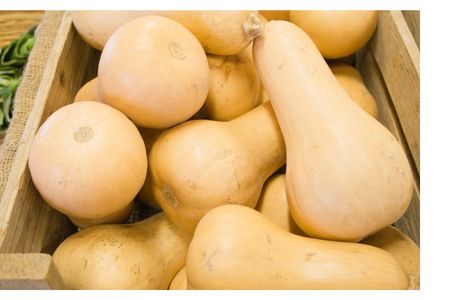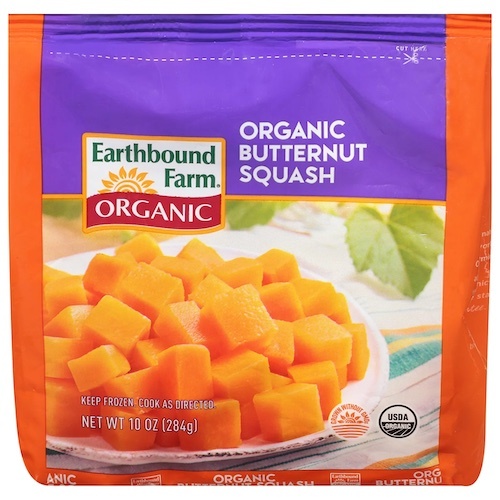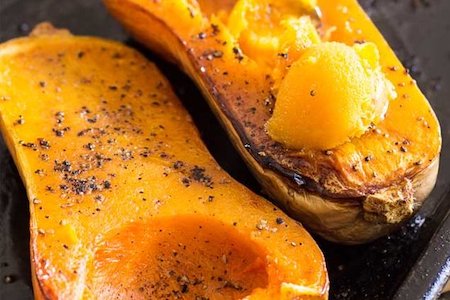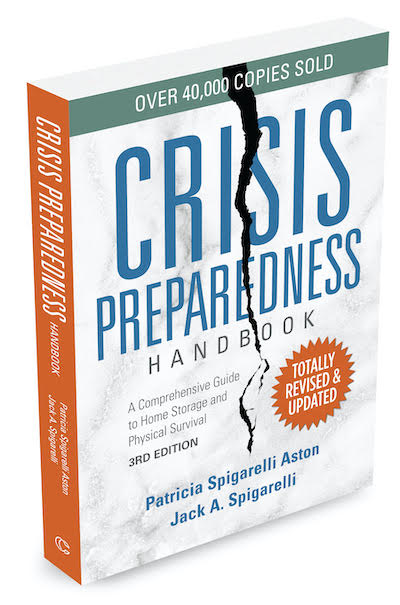
Winter squash is in season right now! They are an important vegetable in the annual fall harvest. This is the time of year to stock up. We just harvested our winter squash and are getting it ready to store it for winter.
Winter Squash Is Versatile and Nutritious

Winter squash can be used in so many delicious ways. Simply bake it and add a little butter or use it to make hearty soups, stews, casseroles, curries, pasta dishes, breads, pies, cakes, etc. Any time a recipe calls for pumpkin, you can substitute a meaty winter squash.
Winter squash is nutrient dense—high in vitamins A, C and B6, minerals like potassium and magnesium, as well as antioxidants, anti-inflammatories, and fiber. The seeds of winter squash are a bonus and are high in healthy fats, vitamin E, iron, and fiber.
Preparedness Challenge Week 43
If you grew your own winter squash, then your task is to properly store it. Or look for favorites like butternut, acorn, and spaghetti along with interesting, more unusual varieties like blue Hubbard, buttercup, delicata, turban, and Lakota at local produce stands and farmer’s markets. Grocery stores also have a nice variety. Watch for promotional prices this time of year.
This week’s challenge: Add winter squash to your food storage.
How Much Winter Squash Should You Store?

How much winter squash you store will depend on your circumstances and preferences. How often do you plan to use it and how well does your family like it? Given that it is so nutritious, delicious, versatile, and easy to store, you might want enough to have one squash a week from November through January—about a dozen. For one squash every two weeks, you would want six. As always, adapt this to your situation.
PLAN TO USE YOUR SQUASH
In the past, sometimes I have forgotten to use the winter squash I have stored. This year I am determined to take advantage of our bounteous crop. I have enough of these nutritious, versatile vegetables to use one or two a week well into January. I am exploring new and varied recipes from stir-fry to lasagna to creamy pasta sauce. It is better to use them by February than to throw them away in April.
How Do You Prepare Winter Squash for Storage?
Except for acorn, winter squash benefits from curing in a warm place for a couple of weeks prior to storing. Let them sit in the garden for a week or so if the weather is warm, but remove them before a frost. Or store them in a warm room in your home. To prepare for the longest storage, wipe squash with a 10:1 solution of water and household bleach and then apply a thin layer of vegetable oil to protect their skins and help keep them from drying out. Squash should be free of blemishes and should have the stem intact for longer storage.
What Is the Best Way to Store Winter Squash?
Store winter squash in a moderately cool place, between 50 and 65 degrees. A cool basement storage room, an unused and unheated bedroom, or an insulated garage are good storage locations. Ideally, store them off the ground on shelves, and so they are not touching each other. Check periodically and discard or compost any squash that show signs of decay. Avoid storing them near apples or other ripening fruit that give off ethylene gas.
FREEZE SQUASH, BAKED OR FRESH

Roasted squash meat can be frozen and used later in recipes calling for pumpkin or cooked squash. Freeze it either as a purée or as roasted cubes. Fresh squash can also be frozen. Peel it and cube it. Blanch the cubes for three to five minutes and plunge them into ice water. Dry the cubes and spread them on a silicone- or parchment-lined baking sheet. Freeze the same way you would individually freeze berries. Store in resealable or vacuum storage bags, or airtight containers. Another option is to purchase frozen squash.
HOME CANNING SQUASH AND PUMPKIN
Winter squash and pumpkin cut into one-inch cubes can be safely pressure-canned. However, The National Center for Food Preservation does not recommend pressure canning pureed or mashed squash. The the variation in the density of purées makes it difficult to determine a universally safe recipe, and there are no laboratory-tested safe recipes.
FREEZE-DRIED WINTER SQUASH
Freeze-dried butternut squash is one final way to preserve butternut squash. However, it is an expensive alternative unless you own your own freeze dryer. Commercially freeze-dried butternut squash costs about $4.00 for an equivalent one-cup of fresh squash.
What is the Storage Life for Winter Squash?
Winter squash should be stored in a cool, dry location. Depending on the variety and storage conditions, winter squash and pumpkins will keep two to four months. Generally, the thicker the skin, the longer they will keep.
- Acorn and spaghetti squash—one to two months. Acorn squash will become yellow and stringy if stored too long.
- Butternut squash and pie pumpkins—two to three months. If you store pumpkins for making pumpkin pies and pumpkin breads and cakes select pie pumpkins. They have a sweeter, denser, and smoother flesh than decorative pumpkins.
- Banana, Hubbard, buttercup squash, turban varieties—three to four months.
Tips for Using Winter Squash
There are hundreds of recipes that feature winter squash. Explore the options and choose several to incorporate into your meals. The most important thing is to use the squash. Below are basic guidelines for using winter squash.
EASY-BAKE METHOD 1

Cut the squash in half length-wise. If the skin is hard to penetrate, use a hammer on the spine of a large butcher knife to help split the squash in two (protect the spine with a kitchen cloth). Lightly oil the cut surfaces and lay them cut-side down on a baking sheet. Line the baking sheet with a silicone mat for easy clean up. It is not necessary to remove seeds until after baking when they are easier to separate.
EASY-BAKE METHOD 2
This method works for meaty squash like butternut. Cut the squash into ¾- to 1-inch slices. Cut slices into strips. Cut the strips into cubes, and cut off the rind. Alternatively, use a vegetable peeler to peel the squash and then cut in cubes. Add cubes and two tablespoons of olive oil to a resealable gallon-bag and gently toss to coat squash cubes. Roast on a silicone-lined baking sheet at 350 degree for about 30 minutes, until soft and lightly browned.
A SIMPLE METHOD FOR ROASTING SQUASH SEEDS
Remove the seeds from the squash before baking. Rinse in a colander to remove connecting tissue. Soak the seeds in a light salt water solution for a half hour. Spread the seeds on a baking tray and roast at 350 degrees until lightly toasted, about ten to fifteen minutes. Alternately, cook squash halves with seeds intact and remove after baking the squash, then roast the seeds.
TIPS FOR STIR-FRYING WINTER SQUASH
- Begin by cutting squash into one-inch chunks. I find it easiest to cut squash in cubes and then slice off the peel.
- Or use a vegetable peeler to remove skin all at once and then cut the squash into cubes.
- Winter squash takes a little longer to become tender, so plan for it to stir-fry it for ten to fifteen minutes total.
- It helps to cover the sauté pan with a lid for a few minutes to help soften the squash.
- Add other vegetables that take less time at appropriate intervals.
- Or remove sautéed squash, stir-fry other ingredients, and add sautéed squash back to finish off and blend flavors.
FAVORITE BUTTERNUT SQUASH SOUP

- Begin by cutting a butternut squash in half the long way and roasting it until soft at 350 degrees, face down on a lightly-greased or silicone-lined sheet tray.
- In a soup pot, sauté one medium yellow onion, diced, in a little olive oil until translucent
- Scoop out squash meat and place in a soup pot along with sautéed onion.
- Add two to three cups of chicken broth to the sauce pot (depending on the size of the squash and your preference for how thick you want the soup).
- Use an immersion blender to blend until smooth. (Alternately use a food processor or blender.)
- Add one teaspoon of curry powder, a pinch of cloves, and a pinch of nutmeg.
- Add ¼ cup real maple syrup.
- Stir in one 14-ounce can of coconut milk.
- Serve hot with cream and roasted walnuts or roasted pumpkins seeds for garnish.
SUBSTITUTE SQUASH FOR PUMPKIN
Recipes like pumpkin bread or pumpkin pie work just as well with butternut or other meaty squash varieties. The result is often a deeper golden color and a rich, creamy flavor. Roast a meaty squash face down on a sheet tray until soft. Puree the squash until smooth and substitute for pumpkin.
Learn More

For more resources about storing, freezing, and preserving food, check out my book Crisis Preparedness Handbook available on my website, CrisisPreparedness.com. It is also available on Amazon as a hardcopy and Kindle format.



3 thoughts on “Now Is the Best Time to Add Some Winter Squash to Your Food Pantry!”
I appreciate the weekly challenge. Every week I look forward to the next adventure into being prepared for the unexpected events that occur in our lives. I would rate them from educational, fun, and exciting as I wait to see what’s next. Thank you so much
David
Gee, thanks so much. Sometimes when I post I wonder if anyone else thinks what I am writing about is useful. It means a lot to get such positive feedback.
Best,
Patricia
I love squash soup I think I will can some this summer! Your so inspiring and motivating I will have tons more in my storage thanks to all your helpful ideas